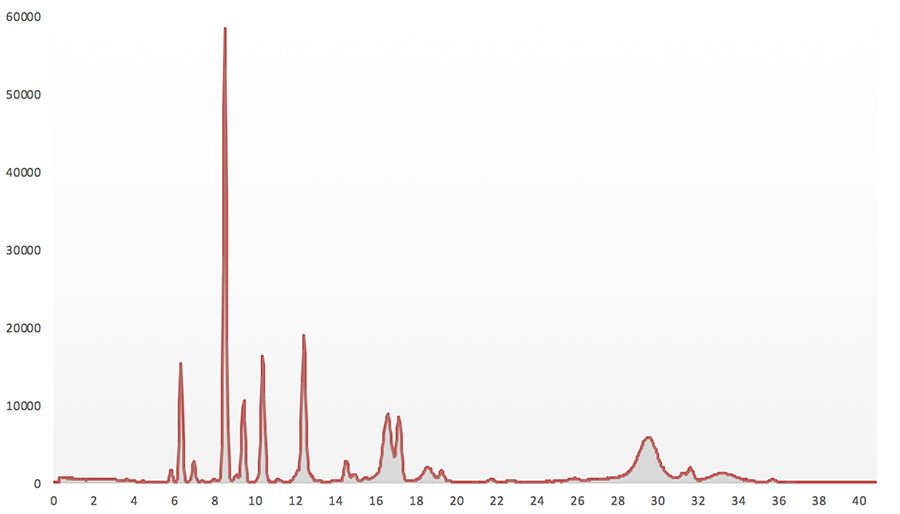Boxray analyzers with extreme efficiency
Energy dispersive XRF (X-Ray Fluorescense) produces great analytics. The diagram shows how x-ray photons of different energy can be used to determine what elements that are present in a sample. All data is collected by one detector during one scan. The size of the peaks will primarily depend on the concentration of an element in the sample. It also depends on the quota between water and solid material in the sample. The percent solids is computed and the result is then corrected.

Real example with Energy dispersive XRF
The example spectrum above is from a Boxray onstream analyzer in use at a Swedish mining site. It has not had any post-processing or other adjustments made to it. With this example we want to make it clear that Energy dispersive XRF can indeed produce results that are better than wavelength dispersive technologies.
Would you be able to reach a similar result with by converting a wavelength dispersive system with a new energy dispersive detector? The answer is easy: no.
The quality of the measurements depend on many things. Such as measurement geometry, space angle of the detectors, materials in secondary targets … the list goes on. The Boxray 24 and Compact have the same measurement geometries, detectors and x-ray tubes. So whichever model suits your needs best you will not have to compromize on measurement quality.
Detects even the smallest amounts
The detector and measurement system also features very low detection limits. This is very useful when performing measurements on incoming ore and on the material going to the tailings pond. It is also one of the reasons why the Boxray analyzers can be used to monitor waste water treatment in a smelter.

